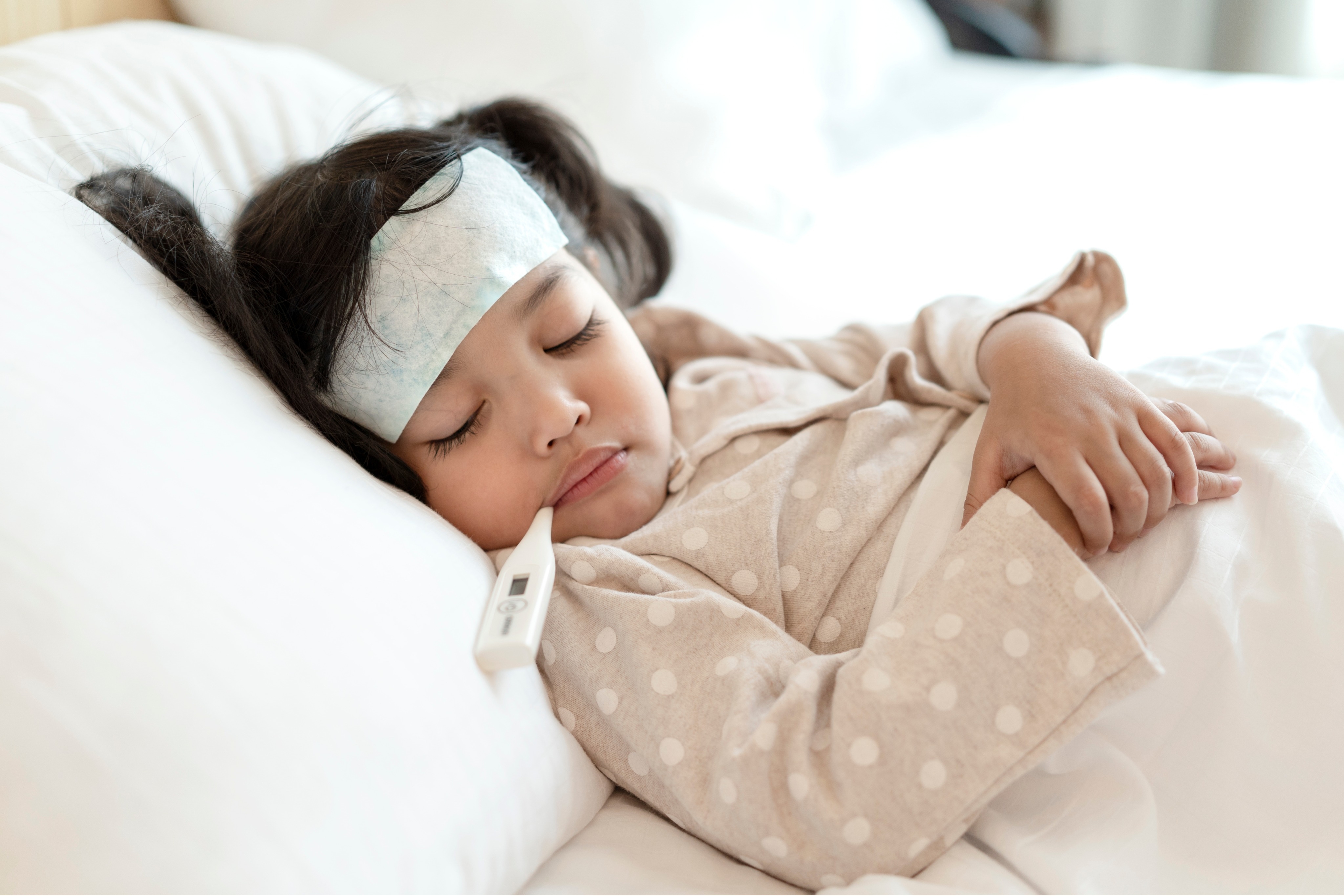Fevers don’t have to be scary. Here’s how to help your child when they come down with a fever.
By Hilary Stempel, MD, MPH

Fevers don’t have to be scary. Here’s how to help your child when they come down with a fever.
Helpful guide on children's fevers by a pediatrician
These days, it seems like every child has a fever. It’s just that time of year. As a pediatrician, I often say, “fever is your friend.” I say this because it’s a sign your body is taking charge to fight an infection.
But often parents or other caregivers express fears that fevers are worrisome. Rest assured, fevers do not cause brain damage and rarely cause seizures! My hope is to share some information so that fevers in kids seem a little less scary.
Why do fevers occur?
When you have an illness, like one from a virus or bacteria, your body needs several types of immune system cells to activate in order to help your body recover. One of the best ways to activate the immune cells is for the brain to raise the “thermostat” of the body. This results in fevers that often come and go over a few days.
What are normal symptoms of a fever?
When the body raises the internal thermometer, several normal changes happen to fight an infection in a healthy way. These include:
-
Body temperature greater than 100.2 degrees fahrenheit or 38 degrees celsius
-
Tiredness and fussiness
-
Headaches and body aches
-
Shivering
-
Faster heart rate and faster breathing
-
Poor appetite
What to do about a fever?
First, take a look at how your child is doing. I always tell parents to pay more attention to your child’s symptoms than the number on the thermometer. Occasionally it can be helpful to measure their temperature with a thermometer. Using a thermometer will tell you if they have a fever and if the fevers are generally getting higher or lower. But, measuring their temperature more than 2-3 times a day can be stressful and usually doesn’t provide any new information.
If your child has a fever, you can help by:
-
Placing a cool washcloth on their forehead for cooling comfort.
-
Dressing your child in light clothing.
-
Encouraging rest. This is a great time for snuggles.It’s possible you may share your child’s illness so washing hands, teaching them to cover their cough in their shoulder or elbow, and avoiding sharing food and drink is the best option to stay healthy.
-
Making certain your child drinks plenty of fluids. Fancy electrolyte drinks are not needed for kids. And remember, drinks with caffeine, like soda, can be dehydrating.
-
Using acetaminophen (Tylenol) or ibuprofen (Motrin) for discomfort in kids over 6 months. Always follow the recommended dose for your child’s weight.
What NOT to do when your child has a fever…
If your child has a fever, we never recommend putting ice packs (or any other cooling substance such as rubbing alcohol) on your child’s body or putting them in an ice bath. This can actually make them shiver, and the shivering can make them warm up even more.
When to worry about a fever?
There are few situations when fever can be very concerning. First, any child less than 3 months old with a temperature over 100.4 F (38 degrees Celsius) should be evaluated for a serious infection. If this happens, call your child’s healthcare provider immediately or go to a local emergency room.
When fevers last for more than 4 or 5 days and are staying high, you should have your child evaluated. This could be a sign of a bacterial infection, like strep throat or pneumonia, which may need to be treated with antibiotics.
Treating fever tip:
Some people tell you to alternate using acetaminophen (Tylenol) or ibuprofen (Motrin) . I always say it’s best to stick with one type of medicine. As it’s safe for your child to have a fever, alternating medication often makes you more prone to accidentally giving too much medicine without any added benefit.
When to call your doctor
-
Your child is extremely sleepy or very irritable
-
They’re having trouble breathing
-
They’re not drinking well or are not peeing every 8 hours
-
Trust your instinct! If your child is acting very differently from their normal and you have that “gut” sense that something is wrong, give your child’s healthcare provider a call.
Fast fever facts:
-
A fever is defined as a temperature greater than 100.4 Fahrenheit or 38 degrees Celsius.
-
A fever is ALWAYS considered an emergency for babies younger than 3 months.
-
Fevers are usually higher in the afternoon or night.
Remember: focus less on the fever (the height of the temperature) and more on your child’s symptoms.
About Bright by Text
Kids don't come with instructions. That's why Bright by Text sends the info parents need most for raising little ones, from pregnancy through age 8. To join our village and get our free messages based on your child’s exact age and where you live, simply text BRIGHT to 274 448 or click here. Don’t forget to follow us on Facebook and Instagram. You’ve got this, parents!

Sign Up For FREE Text Tips Now - Based On The EXACT Age Of Your Child Now!